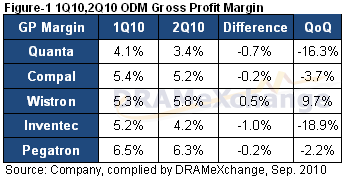BANGALORE, INDIA: Freescale Semiconductor India, in collaboration with the Center for Electronic Design and Technology (CEDT) and the Indian Institute of Science (IISc), hosted the finals of the ‘Smart Car Race India – 2010’, a first of its kind competition for engineering students in India.
The two-day event is part of a series of such competitions that have been organized by Freescale around the world and is being brought to India for the first time.
‘Smart Car Race India – 2010’ received an overwhelming response from the student fraternity from engineering colleges across India, with participation from 22 renowned colleges and more than 90 teams.
Approximately 290 engineering students, along with their faculty guides, participated in the competition. During the competition, students assembled an intelligent model racing car that automatically recognized the specially designed racing track at the final competition venue.
Freescale provided the model car kit and the required development tools to develop a model racing car based on Freescale microcontroller (MCU) technology, along with mentoring support to the teams. The event was the culmination of several months of hard work by students designing and assembling smart model cars for the racing event.
‘Freescale’s University Program’s goal is to foster creativity and cultivate embedded design expertise among engineering students,” said Ganesh Guruswamy, vice president and country manager of Freescale Semiconductor India Pvt Ltd.
“The competition created a perfect platform for students to interact, explore their creativity and get hands-on experience with the microcontrollers in the automobile domain as well as the embedded technology that plays a key role in next-generation smart cars.
“Today, with the rapid changes in the global semiconductor industry, it is essential that students are updated about the latest technologies so they can be partners in an organization’s success from the day they join. Thus, it’s important for universities and the industry to collaborate and build a strong technical foundation.”
The participating teams in the competition were judged by a panel of experts from the automobile industry, embedded systems domain and academia. The criteria included speed, design and technology. The team whose car completed the race with the best performance was declared the winner. The prize money for the six winning teams included - first prize (Rs.1,00, 000); second prize (Rs. 50,000), third prize (Rs. 25,000) and three consolation prizes (Rs. 10,000 each).
Prof. K. Gopakumar, chairman, CEDT, IISc, said: “Our endeavor has always been to maintain association with the industries so that benefits from the developmental work happening in industry and academia can be utilised. Industry and academia collaboration goes a long way in grooming and building a stronger talent base for our country.
“Initiatives such as ‘Smart Car Race India – 2010’ not only provide students a chance to work on the next-gen technologies but also widen their horizon and give them an opportunity to showcase their creative abilities. CEDT has always been a department that places a lot of importance to collaboration with industry. CEDT is happy to be part of this collaboration.”
Details of the winning teams:
* First prize-Team PARAM (Sardar Vallabhai National Institute of Technology, Surat).
* Second prize- Team THE TITANS (Delhi Technological University, Delhi).
* Third prize- Team ELECTRO RACERZ (PSG College of Technology, Coimbatore).
-- Consolation prizes:
* Team ZEALOUS (Aligarh Muslim University, Aligarh).
* Team ACCEL (VIT University, Vellore).
* Team GANDIN SHRI (Thiagarajar College of Engineering, Madurai).
 In order to compete with iPad, we have seen non-apple tablet PC are re-designed with more powerful processor, larger storage, and open software ecosystem(i.e. USB port and Adobe Flash support). In early September, Samsung launch new tablet PC “Galaxy Tab”, leveraging with the advantageous in hardware such as processor and memory in Samsung and Google Android 2.2 at the purpose to against iPad.
In order to compete with iPad, we have seen non-apple tablet PC are re-designed with more powerful processor, larger storage, and open software ecosystem(i.e. USB port and Adobe Flash support). In early September, Samsung launch new tablet PC “Galaxy Tab”, leveraging with the advantageous in hardware such as processor and memory in Samsung and Google Android 2.2 at the purpose to against iPad. According to DRAMeXchange, embedded NAND Flash such as eMMC, on-board Flash storage and SSD alike become the major storage media in current Tablet PC designs. Mainstream NAND Flash capacity is 16GB and 32GB accordingly. We expect surging tablet PC will help to stimulate the demand for NAND Flash.
According to DRAMeXchange, embedded NAND Flash such as eMMC, on-board Flash storage and SSD alike become the major storage media in current Tablet PC designs. Mainstream NAND Flash capacity is 16GB and 32GB accordingly. We expect surging tablet PC will help to stimulate the demand for NAND Flash.


